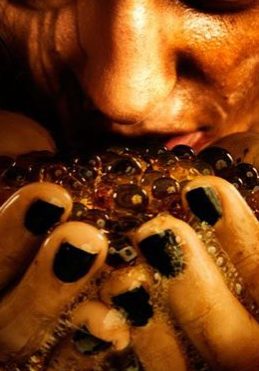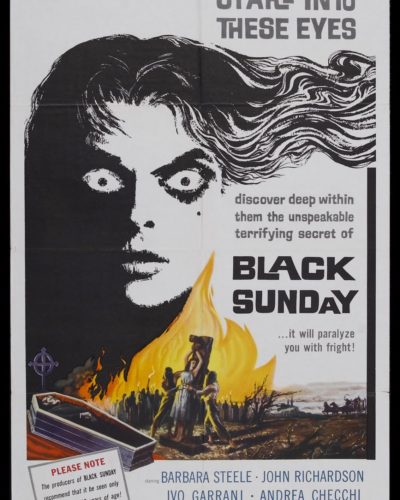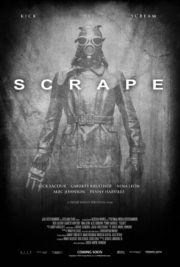Infectious Fear: An Introduction to Bite
“Love is a monster.” With this haunting quote echoing through the viewers’ minds, *Bite*, directed by Chad Archibald and released in 2015, plunges audiences into a horrific world where love intertwines with fear in the most twisted ways. The film follows the story of Jill, a young bride-to-be who embarks on a far-flung trip with her friends to celebrate her upcoming nuptials. Things take a sinister turn when Jill gets bitten by an unknown creature while swimming in a tropical paradise. What unfolds is a harrowing tale of body horror, paranoia, and the terrifying depths of transformation that leave Jill questioning the boundaries of her own humanity.
The Chilling Atmosphere of Bite
From the very first frame, *Bite* creates a palpable sense of dread that lingers like a thick fog. The film relies heavily on an atmosphere saturated with suspense and an unease that escalates with every passing moment. Archibald masterfully cultivates this horror ambiance by placing Jill in increasingly vulnerable situations—a classic psychological trick that keeps the audience on edge. The stunning contrast of the idyllic tropical setting against the grotesque horror that unfolds serves to enhance the fear factor, making the audience acutely aware of how quickly something beautiful can turn monstrous.
Suspense is developed through a carefully curated pacing that allows tension to bubble just beneath the surface. The audience knows something is off long before Jill does. The way the film introduces the idea of the ‘bite’—coupled with the striking visuals—builds a strong sense of foreboding. Rather than relying on sudden scares, *Bite* captures fear through the slow realization of what is happening to Jill, an experience that mirrors the horrifyingly slow pace of transformation itself.
Visuals That Haunt: Cinematic Techniques
*Cinematics in Bite* pulls viewers into its nightmarish realm through an astute use of lighting and color palettes. The film often utilizes dark, moody lighting to represent Jill’s growing turmoil, delivering shadows that seem alive. The color discrepancies play a vital role in evoking discomfort, conveying the drastic shift from bright vacation vibes to shadow-ridden horror as Jill’s condition worsens.
The camera angles employed throughout the film draw attention to Jill’s physical and emotional transformation. Close-up shots effectively capture the visceral reactions of fear and panic that play out on Jill’s face, throwing viewers into the depths of her deteriorating mental state. Archibald’s clever use of special effects enhances the body horror elements; as Jill undergoes her terrifying metamorphosis, the visuals are confrontational, yet deeply unsettling in their authenticity.
Horrifying grotesque transformations—like the one Jill experiences—are undeniably captivating. Archibald strikes a thoughtful balance between utilizing CGI and practical effects, ensuring that the terror feels tangible and real. As Jill morphs into something terrifying, the visual style of *Bite* stands out as both haunting and memorable.
Soundscapes of Horror: The Role of Audio
In horror films, sound often plays a pivotal role in accentuating fear, and *Bite* is no exception. The unsettling soundtrack works in harmony with the visuals to create an atmosphere steeped in tension. The use of discordant sounds amplifies moments of terror, ensuring that viewers remain on constant alert. Every creak, thump, and whisper echoes like a foreboding omen, heightening anxiety during critical moments.
There are times when the absence of sound is just as effective, creating a chilling silence that envelops the audience. This technique creates a sense of unease, as viewers are pushed toward the edge of their seats, anticipating the terror that could erupt at any moment. Archibald’s nuanced sound design keeps audiences emotionally invested and deeply unsettled throughout the film’s progression.
Character Depth: The Art of Performance
One of the film’s most applaudable elements is the believable performances delivered by its cast, particularly the portrayal of Jill by actress Elma Begovic. Jill evolves from an excited bride-to-be into a tormented and paranoid individual through a series of harrowing events. The fear and desperation exuded by Begovic are palpable, making her character’s experience brutally relatable.
The supporting cast is equally commendable, skillfully portraying a range of reactions to the unfolding horror. Their performances not only bolster Jill’s journey but also encapsulate a spectrum of fear, disbelief, and concern. The characters provide a grounding energy as they interact with the growing menace surrounding them, further enhancing the film’s emotional stakes and elevating the horror element.
Jill’s interactions with her friends serve as a reflection of humanity itself, providing moments of levity that juxtapose the impending doom. Watching her spiral into madness adds depth to the narrative, allowing viewers to grasp the stakes involved.
Unfolding Horror: Mechanisms of Fear
As a body horror film, *Bite* excels in catalyzing a visceral response from audiences through a careful blend of psychological and physical horror. The transformation that Jill undergoes—an invasion of her body by an unknown entity—serves as a metaphor for an inner battle. The film explores themes of identity loss and fear of the unknown, drawing on horrific visuals that range from unsettling to outright grotesque.
The film uses several methods to frighten its audience. Sudden shocks, such as unexpected revelations about Jill’s transformation, keep the pacing taut. However, it is the psychological ramifications of the horror that resonate most deeply; viewers are left questioning not only Jill’s fate but their notions of physical safety and mental fragility.
The effective blend of graphical violence and psychological terror situates *Bite* neatly within the body horror subgenre while simultaneously challenging traditional conventions. Audiences are compelled to grapple with existential questions regarding love and self, masked by the veil of horror.
Reflecting on Societal Themes
Underlying *Bite* is a profound commentary on the complexities of love and intimacy. The film examines how love can consume and destroy, emphasizing the precariousness of relationships, especially when faced with adversity. Jill’s transformation—the physical manifestation of an entangled relationship—symbolizes the pressure and expectations inherent in modern love.
This exploration of intimacy and vulnerability gives *Bite* an emotional weight that elevates beyond its horror mechanics. It serves as a cautionary tale about losing oneself in a relationship and the potential monsters that lurk beneath the surface. As Jill grapples with her identity, the film prompts viewers to reflect on their relationships, priorities, and the true essence of love.
The Efficacy of Bite: A Horror Evaluation
In evaluating *Bite*, one must consider its success in eliciting fear and introspection. It manages to be genuinely frightening, employing igniting visual horror elements, effective tension-building, and psychological depth. The film’s innovations within the body horror genre are significant, breathing new life into familiar themes of transformation and loss.
However, while *Bite* shines in most areas, some may find the narrative’s pacing a bit uneven during the climactic moments. The heavy focus on character internalization occasionally slows down the horror and leads to an underwhelming conclusion. Nonetheless, the film’s strengths far overshadow its weaknesses.
Who Will Enjoy Bite?
*Bite* is tailored for horror aficionados who appreciate a balance between visceral horror and psychological depth. Those obtaining a taste for body horror and transformation narratives will find their cravings satisfied. It’s also suitable for viewers drawn to tales that explore human experience through the lens of terror.
However, given its graphic content and moments of explicit violence, casual viewers new to the genre may find themselves unprepared for its intensity. This may limit broader appeal, but fans of films such as *The Fly* and *Raw* will absolutely revel in its themes.
Comparative Insights
*Bite* finds itself comfortably nestled within the body horror subgenre, able to draw parallels with classics like *The Fly* and contemporary pieces such as *Tusk*. Each of these films delves into the essence of humanity through uncanny and gruesome transformations. *Bite* adeptly retains its originality, offering a fresh perspective on familiar terrors while skillfully embroidering emotional resonance through its character arcs.
Overall, *Bite* is a commendable addition to the horror genre, leaving its mark through powerful performances, unsettling visuals, and profound themes. Those willing to journey into its nightmarish depths will emerge with lasting impressions of fear and introspection. With graphic elements and mature themes, this film is best suited for viewers ready to confront not only the nightmares of the unknown but the complexities of love and identity entwined within it.




